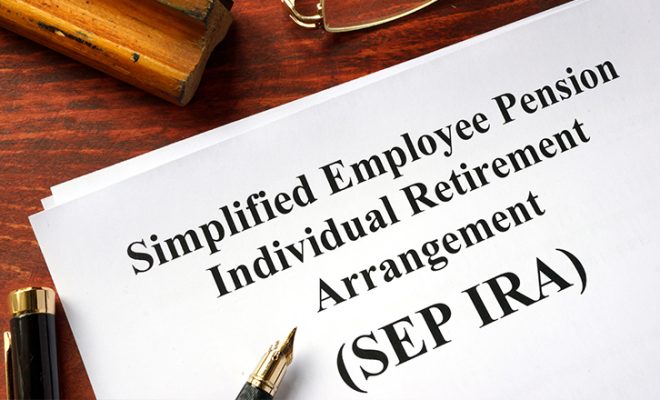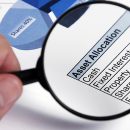Precautions Employees Should Take While Investing for Retirement

Planning for retirement may feel like a responsibility for later but it is necessary to consider doing so as soon as you begin earning. With lifespans extending well into the 80s and beyond, many people may spend two or three decades in retirement. This extended period requires significant savings and strategic financial planning to ensure that one’s golden years are truly golden, rather than marked by financial stress. The era when pensions and Social Security were sufficient to cover retirement needs is fading fast, leaving individuals responsible for securing their financial future.
Compounding the challenge are several economic realities that make the need for retirement planning even more pronounced. Among these, inflation continues to erode purchasing power, meaning that the money saved today will be worth less in the future. Healthcare costs are also climbing, often outpacing general inflation, and these expenses can consume a large portion of retirement savings. Additionally, the long-term stability of Social Security is uncertain, with many experts warning that benefits could be reduced in the coming decades.
A financial advisor can help you navigate the investment landscape and make moves aligned with your financial goals and needs. This article outlines precautions you may consider to ensure your investments grow to support you in retirement.
Understanding employer-sponsored retirement benefits
A significant portion of retirement income for most employees comes from employer-sponsored retirement plans. These plans offer a structured and tax-advantaged way to save for the future. They come in various forms, each with its own set of benefits and considerations.
Types of plans
a. 401(k) plans: Typically offered by private companies, allowing employees to contribute a portion of their pre-tax income. These contributions grow tax-deferred until withdrawal, and many employers offer matching contributions to boost savings.
b. 403(b) plans: Similar to 401(k) plans but usually offered by non-profit organizations, schools, and certain government entities. They also allow pre-tax contributions with tax-deferred growth.
c. 457(b) plans: Often provided to government employees, these plans function similarly to 401(k) and 403(b) plans, allowing for pre-tax contributions and tax-deferred growth.
The importance of retirement benefits to employees can never be emphasized enough. Retirement benefits are an important component of an employee’s overall compensation package with the availability of a robust retirement plan also acting as a deciding factor when choosing between job offers. A strong retirement plan gives confidence that the employer is invested in the long-term well-being of its employees, which can enhance job satisfaction and loyalty. Additionally, these plans often come with perks like employer matching contributions, significantly boosting an employee’s savings without requiring additional out-of-pocket expenses.
Qualified vs. non-qualified plans
a. Qualified plans: These include 401(k) and 403(b) plans, which meet the Employee Retirement Income Security Act (ERISA) guidelines. They offer significant tax benefits, such as tax-deductible contributions and tax-deferred growth, and provide legal protection from creditors in case of bankruptcy.
b. Non-qualified plans: These do not meet ERISA criteria and are typically used to provide supplemental retirement benefits to highly compensated employees. While offering more flexibility in terms of contributions and distributions, they lack the same tax advantages and legal protections as qualified plans.
Below are some precautions employees should consider while investing for retirement:
1. Do not miss the finer details of the retirement plan
a. Contribution limits: Each year, the IRS sets a maximum limit on how much employees can contribute to their retirement accounts. For instance, in 2024, the contribution limit for 401(k) plans was $23,000. Employees aged 50 and older can make additional catch-up contributions, allowing them to contribute an extra $7,500 annually. Understanding these limits is vital because contributing the maximum amount can significantly impact your retirement savings by leveraging tax-deferred growth.
b. Employer match: Many employers offer to match a portion of the employee’s contributions to their retirement plan. This match is essentially free money that can significantly boost your retirement savings. For example, if an employer offers a 50% match on contributions up to 6% of your salary, failing to contribute at least 6% means leaving potential savings on the table. Maximizing the employer match is a key strategy in building a robust retirement fund.
c. Vesting schedules: Vesting schedules determine when you have full ownership of your employer’s contributions to your retirement plan. While your own contributions are always yours, employer contributions may require a certain number of years of service before they are fully vested. Understanding your vesting schedule is important, especially if you’re considering leaving your job, as it can affect the total amount of your retirement savings.
2. Focus on diversification and risk management
a. Investment options: Diversification is a fundamental principle of investment management, particularly within retirement plans. Most employer-sponsored retirement plans offer a range of investment options, including stocks, bonds, and mutual funds. Diversifying your investments across different asset classes helps mitigate risk, as it reduces the impact of poor performance in any single investment. Each asset class has a different risk profile and potential return, and a balanced portfolio is key to long-term growth.
b. Risk tolerance: Your risk tolerance—the level of risk you are comfortable taking on—should play a central role in shaping your retirement investment strategy. Younger employees with a longer time horizon may be able to take on more risk by investing in equities, which generally offer higher returns but also higher volatility. Conversely, those closer to retirement may want to shift their portfolio toward more stable, income-generating investments like bonds.
SPONSORED WISERADVISOR
3. Monitor regularly and make adjustments
It’s essential to regularly review your retirement portfolio to ensure it remains aligned with your financial goals, risk tolerance, and any life changes. Periodic reviews allow you to make necessary adjustments in response to market conditions or personal circumstances, such as a change in income or nearing retirement age.
Some common mistakes associated with investments include failing to rebalance the portfolio periodically, which can lead to an over-concentration in certain asset classes, and not increasing contributions as your salary grows. Regular adjustments and rebalancing are necessary to maintain a diversified portfolio that aligns with your retirement objectives.
4. Learn about retirement plan-protected benefits
a. Legal protections under ERISA: The Employee Retirement Income Security Act (ERISA) provides critical protections for retirement plan participants. ERISA ensures that employers act in the best interest of their employees when managing retirement plans. This includes fiduciary responsibilities such as properly managing the plan’s assets and avoiding conflicts of interest. Additionally, ERISA protects retirement benefits from creditors in the event of bankruptcy, ensuring that employees’ savings are secure.
b. Ensuring continued coverage: It is important to stay informed about your retirement benefits when changing jobs. When transitioning to a new employer, you typically have several options for your retirement savings, such as rolling over your funds into your new employer’s plan or an Individual Retirement Account (IRA). Understanding these options and the rules surrounding rollovers can help you avoid unnecessary taxes and penalties while keeping your retirement savings intact.
5. Take advantage of financial education resources
Employees should take full advantage of any financial education resources or advisory services offered by their employer. These resources can provide invaluable guidance on how to best utilize retirement plans, understand investment options, and make informed decisions that align with their personal financial goals. Whether through workshops, one-on-one counseling, or online resources, financial education can empower employees to maximize the benefits of their retirement plans.
6. Keep an eye out for employer-sponsored benefits
In addition to retirement plans, employees should explore other employer-sponsored benefits that can complement their retirement savings. For instance, Health Savings Accounts (HSAs) offer a triple tax advantage and can be used to save for medical expenses in retirement. Other benefits, such as flexible spending accounts (FSAs) or life insurance, can also contribute to a comprehensive financial strategy. Leveraging these additional benefits can provide further financial security and enhance overall retirement preparedness.
7. Avoid early withdrawals
Taking money out of a retirement account before the age of 59½ typically results in a hefty penalty, along with the regular income tax on the withdrawn amount. Early withdrawals can significantly reduce the potential growth of your retirement savings, making it harder to meet your financial goals in retirement. It is, thus, advised to stay invested till 59½ or longer.
8. Be aware of associated fees
Many retirement plans come with various fees, including management fees, fund expense ratios, and administrative fees. High fees can erode your investment returns over time. It’s important to be aware of the different fees associated with your retirement accounts and consider lower-cost investment options when possible.
9. Plan for healthcare costs
Healthcare is one of the largest expenses in retirement, and it often increases faster than general inflation. Employees should consider how they will cover healthcare costs in retirement, including the potential need for long-term care insurance. Health Savings Accounts (HSAs) can be a valuable tool for saving for these expenses on a tax-advantaged basis.
10. Understand Social Security benefits
Social Security can be a key component of retirement income, but it’s important to understand how benefits work. The age at which you begin taking Social Security can significantly impact the amount you receive. Delaying benefits until age 70 can increase your monthly benefits, while taking them early reduces it.
11. Account for inflation
Inflation reduces the purchasing power of your money over time. When planning for retirement, consider investments that have the potential to outpace inflation, such as equities, and be cautious of investing too much in low-yield investments like bonds or cash.
12. Have an emergency fund
Even in retirement, it’s important to maintain an emergency fund to cover unexpected expenses. This helps avoid dipping into retirement accounts prematurely, which can result in penalties and disrupt long-term financial planning.
13. Consider the impact of taxes on retirement
Different types of retirement accounts (e.g., traditional IRAs vs. Roth IRAs) have different tax implications. Understanding how your withdrawals will be taxed can help you plan more effectively and avoid unpleasant surprises during retirement.
To conclude
Empowering yourself with knowledge is the first and most meaningful step in securing your financial future. Employees who take a proactive approach to retirement planning are far more likely to achieve long-term financial security. The journey to a comfortable retirement begins with the decisions you make today.
Remember, it is never too early to start retirement planning. Consider reviewing your current retirement plan, assessing whether you’re taking full advantage of employer matches, and diversifying your investments to balance risk. If you’re unsure about any aspect of your plan, don’t hesitate to seek advice from financial professionals or use the educational resources your employer may provide. By taking these steps today, you can build a solid foundation for a secure and fulfilling retirement tomorrow.
Use the free advisor match tool to get matched with experienced financial advisors who can help you invest for retirement while ensuring you stay on track with your retirement goals. Answer a few simple questions based on your financial needs and get matched with 2 to 3 financial advisors who are best suited to help you.











